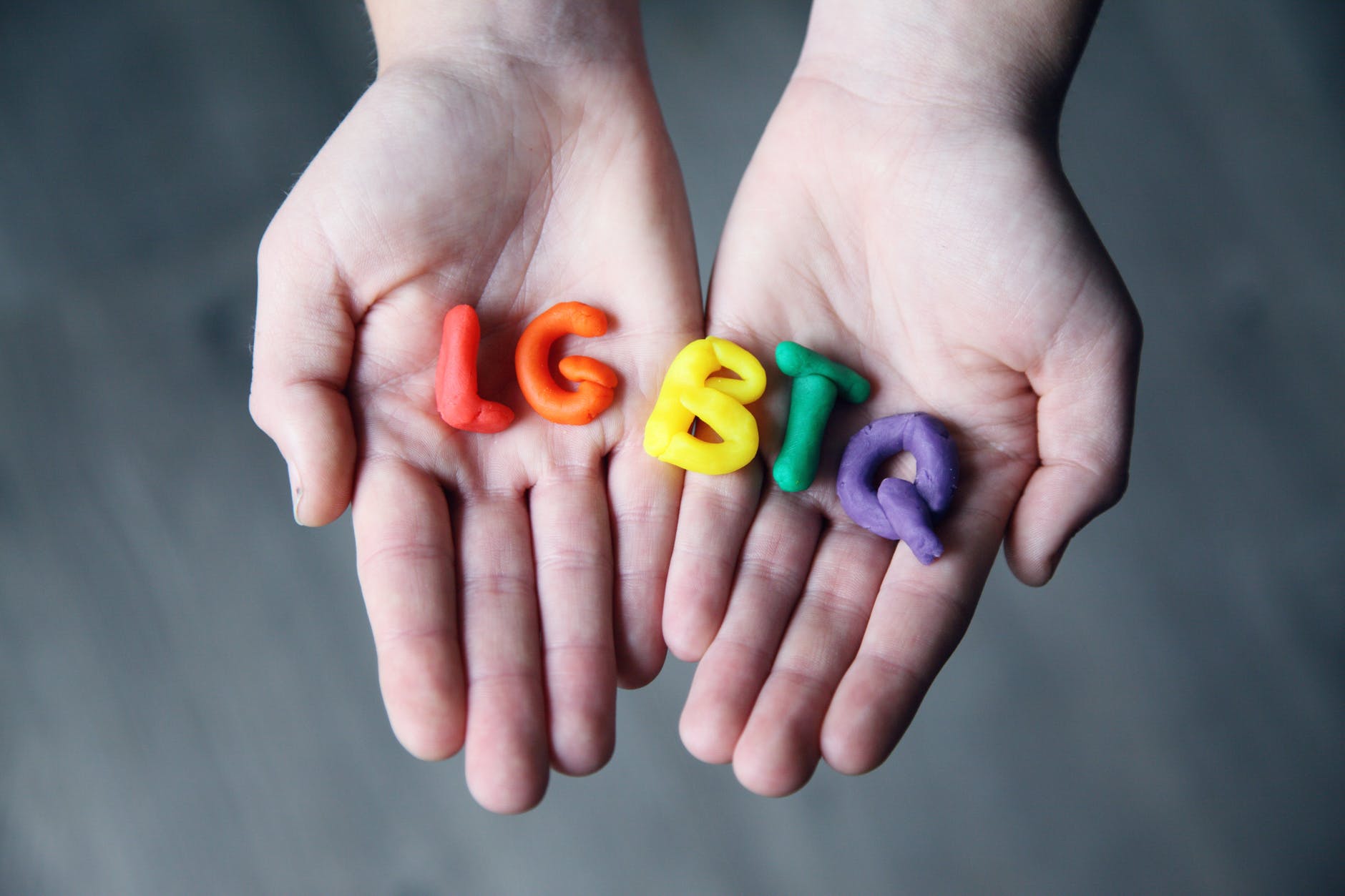
James Donaldson on Mental Health - Mental Health Challenges of LGBTQ+ Kids
A look at risk factors and protective factors
 Photo by Sharon McCutcheon on Pexels.com
Photo by Sharon McCutcheon on Pexels.comWriter: Juliann Garey
Clinical Expert: Emma C Woodward, PhD
What You'll Learn
- What factors make LGBTQ+ kids more likely to develop mental health problems?
- What can reduce those risks?
- How can parents support LGBTQ+ kids’ mental health?
- Quick Article
- Full Article
- Key risk factors for LGBTQ+ youth
- Key protective factors
- How parents can help
Being LGBTQ+ doesn’t cause mental health problems. But because LGBTQ+ kids often face factors like rejection, bullying, discrimination, and violence, they are at a higher risk of challenges including depression, anxiety, and attempting suicide. However, there are ways that parents and others can support their mental health and help them grow up safe and happy.
Factors that make kids more likely to develop mental health challenges are called risk factors. The stress of being LGBTQ+ is a risk factor for nearly all kids who identify as LGBTQ+. They may be scared of being rejected or worry that they might be harassed or discriminated against because of their identity.
Directly experiencing bullying or discrimination is also a major risk factor, and so is lacking support at home and/or at school. Not having access to supportive mental health care and being addressed by the wrong name or pronouns are risk factors as well.
Things that reduce the impact of risk factors are called protective factors. They make it less likely that kids will develop mental health challenges. The biggest protective factor for LGBTQ+ kids is having unconditional love and support at home. Other supportive adults can also make a big difference, and so can getting good health care, attending a school with supportive policies, and being able to safely use the name and pronouns that match their identity.
#James Donaldson notes:
Welcome to the “next chapter” of my life… being a voice and an advocate for #mentalhealthawarenessandsuicideprevention, especially pertaining to our younger generation of students and student-athletes.
Getting men to speak up and reach out for help and assistance is one of my passions. Us men need to not suffer in silence or drown our sorrows in alcohol, hang out at bars and strip joints, or get involved with drug use.
Having gone through a recent bout of #depression and #suicidalthoughts myself, I realize now, that I can make a huge difference in the lives of so many by sharing my story, and by sharing various resources I come across as I work in this space. #http://bit.ly/JamesMentalHealthArticle
Find out more about the work I do on my 501c3 non-profit foundation
website www.yourgiftoflife.org Order your copy of James Donaldson's latest book,
#CelebratingYourGiftofLife: From The Verge of Suicide to a Life of Purpose and Joy

www.celebratingyourgiftoflife.com
Link for 40 Habits Signup
bit.ly/40HabitsofMentalHealth
If you'd like to follow and receive my daily blog in to your inbox, just click on it with Follow It. Here's the link https://follow.it/james-donaldson-s-standing-above-the-crowd-s-blog-a-view-from-above-on-things-that-make-the-world-go-round?action=followPub
Parents of LGBTQ+ kids can support them by making home a safe space and advocating for them at school when necessary. It also helps to connect them to health care (both physical health and mental health) that respects their gender identity and sexual orientation. This kind of support can make the difference between a child who develops mental heath issues and one who thrives as they get older.
If you have a child who’s LGBTQ+ you may worry about whether they’re getting the support they need to be safe and healthy. You may be aware that LGBTQ+ kids are at higher risk than other kids for developing mental health problems such as depression, anxiety, and substance abuse. They also have higher rates of contemplating, attempting, and dying by suicide.
That’s why it’s important to understand what factors make an LGBTQ+ young person more or less likely to develop a mental health problem, including considering or attempting suicide.
Being LGBTQ+ doesn’t cause mental health problems — and is not caused by mental health problems. Rather, these kids’ increased risk of developing mental health problems stems from exposure to factors like rejection, bullying, discrimination, and violence.
While acceptance of LGBTQ+ kids has increased over the last few decades, the current moment is an especially challenging one. The coronavirus pandemic took a serious toll, isolating many queer kids from important support networks — friends, teachers, allies, and adult role models. Recent homophobic and transphobic legislation may also contribute to increased mental health risks.
In a 2022 Trevor Project poll of 34,000 LGBTQ+ youth between the ages of 13 and 24 years old, 73 percent reported feeling symptoms of anxiety, and 58 percent reported symptoms of depression. Forty-five percent said they had seriously considered suicide. For transgender youth, the numbers are even worse: 1 in 5 actually attempted suicide.
What can be done?
The more we know about what helps — and harms — LGBTQ+ kids, the better we can support them. Here, we look at both the risk factors — things that increase the likelihood that an LGBTQ+ kid will develop serious mental health problems — and the protective factors, or things that reduce that risk. If a child has a lot of risk factors and hardly any protective factors, they are particularly vulnerable. On the other hand, if they have a fair number of risk factors but a lot of protective factors, they may be less vulnerable.
Key risk factors for LGBTQ+ youth
The stress of being LGBTQ+ is a risk factor that’s near-universal. “These youth’s identities carry stressors with them related to being in such a marginalized and misunderstood group,” says Emma Woodward, PhD, a clinical psychologist at the Child Mind Institute. The pressure and distress that come with feeling the need to conceal their identities, the fear that they will be harassed or discriminated against, the feelings of rejection and self-doubt that can result from being treated as if who they are is something to be ashamed of.
Additionally, LGBTQ+ kids often have stressful or even traumatic experiences that can impact their mental health, including:
- Being bullied or actively discriminated against. “Bullying, discrimination, and social exclusion are hugely important risk factors for these kids,” says Dr. Woodward. According to the Trevor report, 73% of LGBTQ+ youth reported that they have experienced discrimination based on their sexual orientation or gender identity at least once in their lifetime.
- Little or no family support. One of the biggest health and safety risk factors for queer youth is lack of familial support and acceptance.
- Lack of support by teachers and school administration.
- Lack of access to mental health care. (The 2022 Trevor Project poll found that 60% of respondents were unable to get necessary mental health services.)
- Physical harm. The Trevor poll found that 38% of LGBTQ youth reported having been physically threatened or harmed due to their sexual orientation or gender identity.
- Being threatened with conversion therapy. Therapy designed to make a queer or trans person “go back to normal” has been consistently associated with negative mental health outcomes and greater risk for suicide.
- Being misgendered (addressed using the wrong pronouns) or not being called by their chosen name.
Key protective factors
While their struggles can be significant, with support and acceptance, LGBTQ+ kids can thrive. Most experts agree that the most important protective factor for LGBTQ+ kids is a high degree of support from family or caregivers. The Trevor Project poll bears that out: Having a strong family network and support reduced the percentage of youth who considered or attempted suicide in the past year by more than half.
Other important protective factors include:
- Access to the health care they need. If a child is struggling to get help, parents, caregivers, or community support networks can step in as advocates, says Dr. Woodward. In some ways, that may actually be easier now than it was two years ago, especially in areas where in-person mental health care has historically been limited.
- Being able to wear the clothes they need to express their identity or change their appearance to match their identity.
- Having a supportive adult in their life. This can be a teacher, family friend, coach, guidance counselor — anyone who can provide kindness and support when kids need it most. “Just having an adult who is understanding and supportive and will listen to a child can be really helpful,” says Dr. Woodward. “I think people have the ability help on a micro scale. People can provide individual support for these kids.”
- Being allowed to use their chosen names and pronouns at home, school, and work. One study showed that this significantly reduced depression and suicidal thinking in LGBTQ+ youth.
- Having strong LGBTQ+ role models. Positive representations of LGBTQ+ individuals in the media — on streaming platforms, in films, music, sports, and even advertising — are becoming more and more common.
- Attending a school with supportive policies, such as allowing LGBTQ+ kids to use the bathroom of their choice or a zero-tolerance policy regarding bullying.
- Having a doctor who is an ally.
- Exposure to happy, thriving LGBTQ+ adults.
How parents can help
Though we can never entirely protect LGBTQ+ kids from the challenges they face, reducing risk factors and increasing protective factors can make a big difference. Here are a few ways that parents and families can do just that:
- Make your home a safe space. “Just having home be a place that they can be themselves without judgment or rejection or consequences makes a big difference,” says Dr. Woodward.
- Advocate for your child in their school. “Parents can help kids advocate for and get the services and accommodations they need,” Dr. Woodward says. “And, if their teen is having negative experiences in school, parents can play a role as well. Those are ways in which parents can help kids feel supported.”
- Get your child connected to health care (both physical health and mental health) that affirms their sexual orientation and gender identity. For many LGBTQ+ kids, working with a supportive mental health professional is an important way to process challenges and learn coping skills. You can learn more here about finding affordable mental health care in your area.
- Have a talk about social media — what’s safe and what’s not.
Parenting can be hard at times and being the parent of an LGBTQ+ kid can be harder for a lot of reasons. But even if it takes you a long time to accept who they are, you can support them from the moment they come out to you. And that support can be the difference between having a kid who thrives or one who struggles with ongoing mental health issues.
 Photo by Sharon McCutcheon on Pexels.com
Photo by Sharon McCutcheon on Pexels.com https://standingabovethecrowd.com/james-donaldson-on-mental-health-mental-health-challenges-of-lgbtq-kids/


No comments:
Post a Comment